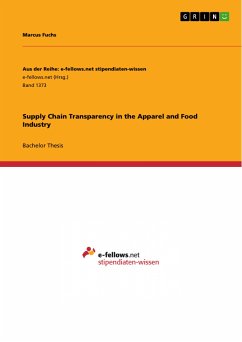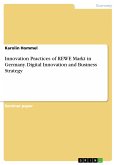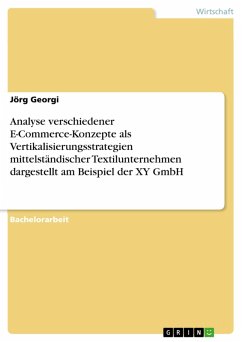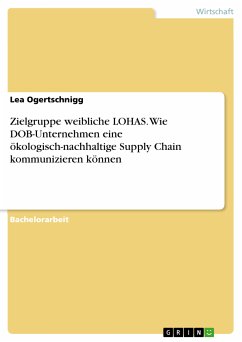Bachelor Thesis from the year 2014 in the subject Business economics - Offline Marketing and Online Marketing, grade: 1,3, University of Mannheim, language: English, abstract: Modern consumers are concerned about more than quality and price of the products they purchase. They demand concrete and credible information about the entire procurement process. Unsubstantiated company statements on the sustainability and safety of sourcing processes have proven to be insufficient to meet those demands (Hofstede, 2003). More and more companies increase the transparency of their supply chain (SC). However, in order to reach customers and to fulfill their needs, companies have to effectively communicate supply chain transparency (SCT) to the end consumer (New, 2010). This thesis focuses on transparency in the apparel and food industry because especially here consumers claim insights into the global supply networks (Meise, 2011, p. 138). It analyzes tools to enable SCT and provides an overview of practical methods that are available to the apparel and food industry for communicating transparency to consumers. Moreover, the paper evaluates these methods based on their effectiveness at meeting consumer demand and illustrates how different approaches for enabling and communicating SCT can be combined. The presented information was obtained through extensive literature research and website analyses. An exhaustive review of the particular laws and regulations relating to transparency is out of the scope of this thesis. First, this paper defines the concept of SCT and analyzes current consumer demand in the apparel and food industry. It explains how certain industry characteristics and recent SC scandals drive this demand. The following chapter deals with tools and methods employable by producers to gain the necessary information for fulfilling consumer demand. On the one hand, tracking and tracing within a supply network is analyzed. On the other hand, two methods for analyzing SC sustainability are addressed. In a next step, this thesis evaluates different approaches to how apparel and food companies can communicate the demanded information to consumers and, thereby, make SCs more transparent. In doing so, the concept of labeling in the apparel and food industry is analyzed. Subsequently, the use of company websites and social media for supplying customers with SC information is addressed as well. Before drawing a conclusion, the paper proposes a framework that shows how methods for obtaining SC information can be integrated with different communication channels to meet consumer demand for SCT.
Dieser Download kann aus rechtlichen Gründen nur mit Rechnungsadresse in A, B, BG, CY, CZ, D, DK, EW, E, FIN, F, GR, HR, H, IRL, I, LT, L, LR, M, NL, PL, P, R, S, SLO, SK ausgeliefert werden.









